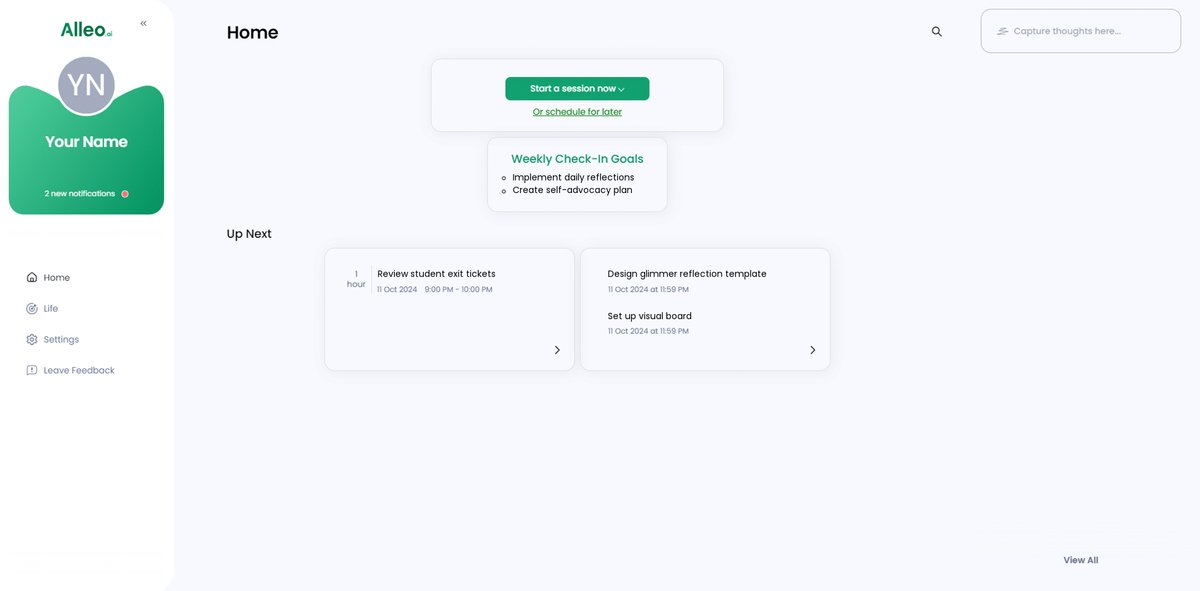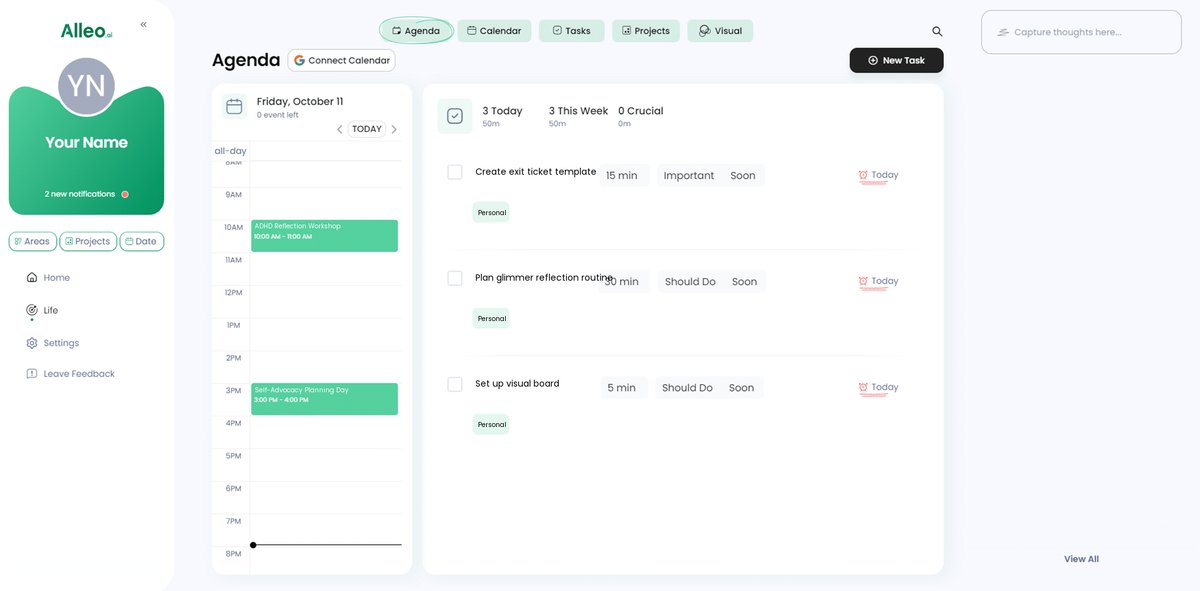5 Essential Strategies for Teachers to Foster Self-Reflection in ADHD Students
Have you ever found yourself struggling to help an ADHD student develop genuine self-reflection skills?
As a life coach, I’ve worked with many educators facing this exact challenge. In my experience, fostering self-reflection in ADHD students is crucial for their academic and personal growth. Implementing effective ADHD student self-reflection strategies can significantly improve classroom management and learning outcomes.
In this article, you’ll discover five actionable ADHD student self-reflection strategies to help your students improve self-awareness and academic performance. We’ll cover daily reflection routines, self-assessment techniques for ADHD learners, and more, including metacognition strategies and mindfulness practices for ADHD in education.
Let’s dive into these reflective learning techniques for ADHD students.

Understanding the Struggles of ADHD and Self-Reflection
Let’s explore why fostering ADHD student self-reflection strategies is so challenging. Many clients report that ADHD affects their ability to focus and reflect on their actions, making reflective learning techniques for ADHD crucial.
Teachers often face issues like inattention, impulsivity, and difficulty with organization in ADHD classroom management. These traits make it hard for students to pause and think about their learning experiences, highlighting the need for metacognition strategies for ADHD learners.
The impact is significant. Students struggle to understand their strengths and weaknesses, leading to frustration. This underscores the importance of self-awareness exercises for students with ADHD.
In my experience, addressing these challenges requires targeted strategies. This is essential for improving both self-awareness and academic performance, including personalized learning plans for ADHD students and executive function support for ADHD students.

Key Strategies for Fostering Self-Reflection in ADHD Students
Overcoming this challenge requires a few key steps. Here are the main areas to focus on to make progress with ADHD student self-reflection strategies:
- Implement daily glimmer reflection routines: Set aside time for students to reflect on positive moments each day, incorporating mindfulness practices for ADHD in education.
- Use exit tickets for self-assessment: Create ADHD-friendly self-assessment tools like exit tickets prompting reflection on daily lessons and challenges.
- Teach task analysis for goal-setting: Break down tasks into smaller steps and use real assignments as examples, supporting ADHD student goal-setting methods.
- Create personalized self-advocacy plans: Develop individual plans with students to identify strengths and set goals, aligning with personalized learning plans for ADHD students.
- Encourage hands-on reflective activities: Incorporate journaling, drawing, and role-playing to foster self-reflection, enhancing metacognition strategies for ADHD learners.
Let’s dive in!
1: Implement daily glimmer reflection routines
Incorporating daily glimmer reflection routines can significantly enhance ADHD student self-reflection strategies and improve their self-awareness skills.
Actionable Steps:
- Set aside 5-10 minutes at the end of each day for students to write down one positive moment (Glimmer), supporting executive function for ADHD students.
- Use a visual board where students can share their glimmers with the class to foster a supportive environment and enhance ADHD classroom management.
- Provide simple templates or prompts to guide students’ reflections and make the process straightforward, serving as ADHD-friendly self-assessment tools.
Explanation: Daily glimmer reflection helps students focus on positive moments, counteracting the natural negativity bias often seen in ADHD students. According to OT4ADHD, practicing identifying glimmers can transform how students approach each day.
By regularly reflecting on positive moments, students improve their self-awareness and emotional regulation, key components of reflective learning techniques for ADHD.
Benefits of daily glimmer reflection:
- Boosts positive thinking and self-esteem
- Enhances emotional regulation skills
- Creates a more supportive classroom atmosphere
This approach sets the stage for a more positive classroom atmosphere and prepares students for deeper self-assessment techniques, supporting ADHD student self-reflection strategies.

2: Use exit tickets for self-assessment
Using exit tickets for self-assessment is an effective way to help ADHD students reflect on their learning experiences and implement ADHD student self-reflection strategies.
Actionable Steps:
- Design exit tickets with specific questions prompting students to reflect on what they learned and any challenges faced, supporting metacognition strategies for ADHD learners.
- Review exit tickets weekly to identify common themes and address them in future lessons, improving ADHD classroom management.
- Provide feedback on exit tickets to help students understand their progress and areas needing improvement, enhancing self-awareness exercises for students with ADHD.
Explanation: Exit tickets encourage students to pause and think about their daily learning, which enhances self-awareness and academic performance, serving as effective reflective learning techniques for ADHD.
According to ADDitude, using structured self-assessment tools can help ADHD students develop better focus and organizational skills, supporting executive function for ADHD students.
This method also allows teachers to tailor future lessons based on student feedback, facilitating personalized learning plans for ADHD students.
By incorporating exit tickets, you create a routine that promotes consistent reflection and continuous improvement, reinforcing ADHD student self-reflection strategies.

3: Teach task analysis for goal-setting
Teaching task analysis for goal-setting is essential for helping ADHD students break down tasks into manageable steps, supporting ADHD student self-reflection strategies.
Actionable Steps:
- Break down larger tasks into smaller, manageable steps and teach students to do the same, enhancing ADHD classroom management.
- Have students create a step-by-step plan for a specific goal, such as completing a project, incorporating ADHD student goal-setting methods.
- Ask students to use checklists and timelines to help them stay on track, promoting executive function support for ADHD students.
Explanation: Teaching task analysis helps ADHD students by providing structure and clear steps, making tasks less overwhelming. This approach aligns with current trends in executive function coaching, which emphasizes breaking down tasks to improve focus and organization, supporting reflective learning techniques for ADHD.
According to Untapped Learning, developing personalized executive function skills is crucial for academic success and self-reflection, particularly for ADHD students.
Key components of effective task analysis:
- Clear, specific steps, supporting metacognition strategies for ADHD learners
- Realistic timelines, aiding in ADHD-friendly self-assessment tools
- Built-in checkpoints for progress review, enhancing ADHD student self-reflection strategies
This method empowers students to achieve their goals and builds their confidence, promoting positive reinforcement for ADHD self-reflection.

4: Create personalized self-advocacy plans
Creating personalized self-advocacy plans is crucial for empowering ADHD students to understand their strengths and advocate for their needs. These plans serve as effective ADHD student self-reflection strategies.
Actionable Steps:
- Hold one-on-one meetings with students to discuss their strengths, weaknesses, and goals, incorporating ADHD-friendly self-assessment tools.
- Develop a personalized learning plan for ADHD students that includes specific strategies for self-advocacy and executive function support.
- Encourage students to set short-term and long-term goals using ADHD student goal-setting methods and regularly review their progress.
Explanation: Personalized self-advocacy plans help students take ownership of their learning journey. By setting realistic goals and tracking progress, students build self-awareness and confidence, aligning with reflective learning techniques for ADHD.
According to ADDitude, self-awareness is foundational for effective self-advocacy. This approach aligns with current trends in individualized education, ensuring that each student’s unique needs are met through metacognition strategies for ADHD learners.
This method empowers students to become proactive in their education, incorporating mindfulness practices for ADHD in education and positive reinforcement for ADHD self-reflection.

5: Encourage hands-on reflective activities
Encouraging hands-on reflective activities can help ADHD students express their thoughts and reflections more effectively, serving as valuable ADHD student self-reflection strategies.
Actionable Steps:
- Incorporate journaling, drawing, or role-playing activities that allow students to express their thoughts and reflections, supporting metacognition strategies for ADHD learners.
- Schedule regular group discussions and peer feedback sessions to foster a supportive environment for sharing reflections, enhancing ADHD classroom management.
Explanation: Hands-on reflective activities provide a creative outlet for students to explore their thoughts. This approach supports emotional regulation and self-awareness, which are crucial for ADHD students and can be incorporated into personalized learning plans for ADHD students.
According to ADDitude, engaging in creative activities helps students process their experiences and learn more effectively.
Popular hands-on reflective activities:
- Mind mapping thoughts and ideas as part of reflective learning techniques for ADHD
- Creating visual journals or sketchbooks as ADHD-friendly self-assessment tools
- Engaging in guided meditation or visualization exercises as mindfulness practices for ADHD in education
This method nurtures a positive classroom environment and encourages continuous self-reflection, supporting executive function for ADHD students.
Partner with Alleo to Foster Self-Reflection in ADHD Students
We’ve explored ADHD student self-reflection strategies to help develop essential skills. Did you know you can use Alleo to make this process smoother for ADHD classroom management?
Alleo offers tailored support with full coaching sessions like any human coach, incorporating reflective learning techniques for ADHD. Start with a free 14-day trial, no credit card required.
Set up an account, create a personalized learning plan for ADHD students, and work with Alleo’s coach to overcome specific challenges using metacognition strategies for ADHD learners.
The coach will follow up on progress, handle changes, and keep you accountable via text and push notifications, supporting executive function for ADHD students.
Ready to get started for free? Let me show you how to implement ADHD student self-reflection strategies!
Step 1: Logging in or Creating an Account
To start fostering self-reflection in your ADHD students with Alleo, simply log in to your account or create a new one to begin your 14-day free trial.

Step 2: Choose “Building better habits and routines”
Select “Building better habits and routines” to develop consistent self-reflection practices that will help ADHD students improve their self-awareness and academic performance.

Step 3: Select “Personal” as Your Focus Area
Choose “Personal” as your focus area to address self-reflection challenges in ADHD students, aligning with the article’s strategies for improving self-awareness and emotional regulation.

Step 4: Starting a coaching session
Begin your journey with Alleo by scheduling an intake session, where you’ll discuss your ADHD students’ self-reflection challenges and create a personalized plan to implement the strategies mentioned in the article.

Step 5: Viewing and Managing Goals After the Session
After your coaching session, check the app’s home page to review and manage the goals you discussed, helping you stay on track with implementing self-reflection strategies for your ADHD students.

Step 6: Adding events to your calendar or app
Use Alleo’s calendar and task features to track your progress in implementing self-reflection strategies for your ADHD students, allowing you to easily schedule daily reflection routines, set reminders for exit tickets, and monitor the completion of personalized self-advocacy plans.

Wrapping Up: Empowering ADHD Students Through Self-Reflection
As we conclude, it’s clear that fostering self-reflection in ADHD students is essential for their growth. The journey of implementing ADHD student self-reflection strategies isn’t easy, but it’s incredibly rewarding.
Using daily glimmer reflection routines, exit tickets, task analysis, personalized self-advocacy plans, and hands-on activities can make a significant difference. These reflective learning techniques for ADHD help students build self-awareness and improve academically, supporting their executive function and metacognition.
I know it can be challenging to implement ADHD-friendly self-assessment tools, but you’re not alone. Remember, Alleo is here to support you with ADHD classroom management techniques.
Start implementing these ADHD student self-reflection strategies today and see the positive impact on your students. And consider trying Alleo’s free 14-day trial for additional support and guidance in creating personalized learning plans for ADHD students.
You’ve got this!